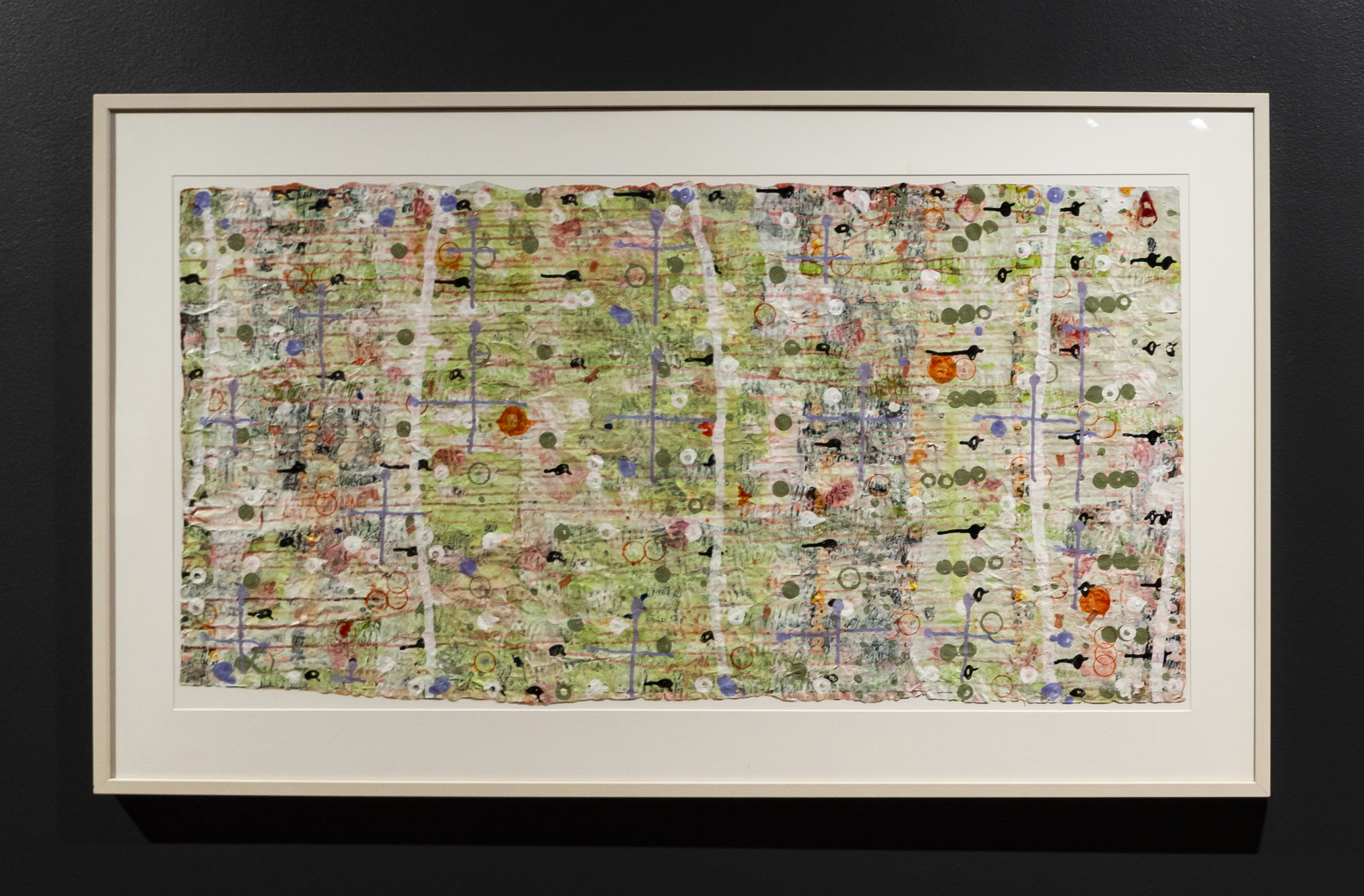
Image: Helen FULLER Shower curtain 2003, synthetic polymer paint and coloured ink on oriental paper. QUT Art Collection. Purchased 2007.
This work is synthetic polymer paint and coloured ink on oriental paper. Measuring 68.5 centimetres high and 1.3 metres wide, the work has a tactile quality with the paper softly buckling in response to the paint and ink on its delicate surface. The work is framed with a plain white border within a simple cream frame.
Moving from left to right are four sections in pastel green and pastel pink sections with the colours fading as they move towards the far right hand side. There are three distinct vertical white lines going from the top to the bottom of the work with each acting as a way to divide up the composition of the work. Each section contains lilac crosses and markings, black oval shapes with trailing tails of paint scattered throughout the work. Pink lines travel from left to right fading into the background of this lively work, bustling for space. Dispersed throughout the work are two types of circles, one is filled and in the other circle, only the outline of the circle is shown. These circles appear in a darker muted green, a red-orange and white.
There is a waxy sheen over the entirety of the surface of the work reminiscent of a wet shower curtain.
Fellow artist Glenn Barkley describes Fuller’s work as follows:
In Fuller’s work, painting and drawing and ceramics are intrinsically linked. As a painter, over time her paintings seem to be pushing more and more beyond the formalities of the grid into the realms of the weave, resembling not the gridded austerity of modernism but rather domestic realms – tablecloths, tea towels and cheap gingham dresses – and the minutiae of the natural worlds of cobwebs as well as nature’s grandness, the ink-blotted descriptions of celestial skies.
In a world often fixated on flawlessness, Fuller embraces the irregular, the imperfect, and the beautifully unfinished. Her philosophy of ‘bless this mess’ working to pay homage to a rebellion against conformity, a stance that encourages us to see the artistry in the crooked lines, the smudges, and the accidental imperfections that breathe life into her creations.
Fuller recalls a dialogue of past art and craft teachers who reprimanded students for crooked lines, ill-formed letters, smudges, accidental blobs, rubbings out, grubby finger marks, stains and poorly paced needlework stitches. She states, as a visual art practitioner, I value these irregularities as positive inclusions and celebrate them as creative openings in my work.

